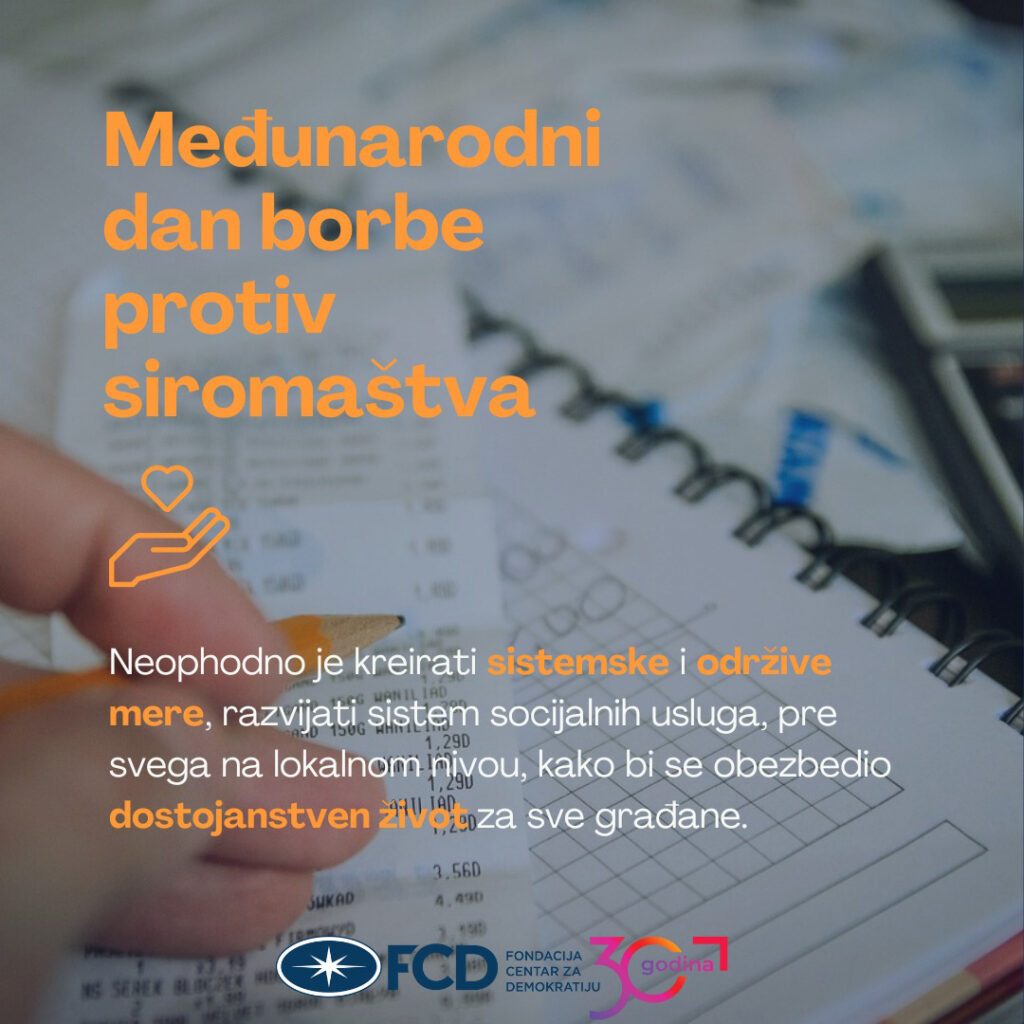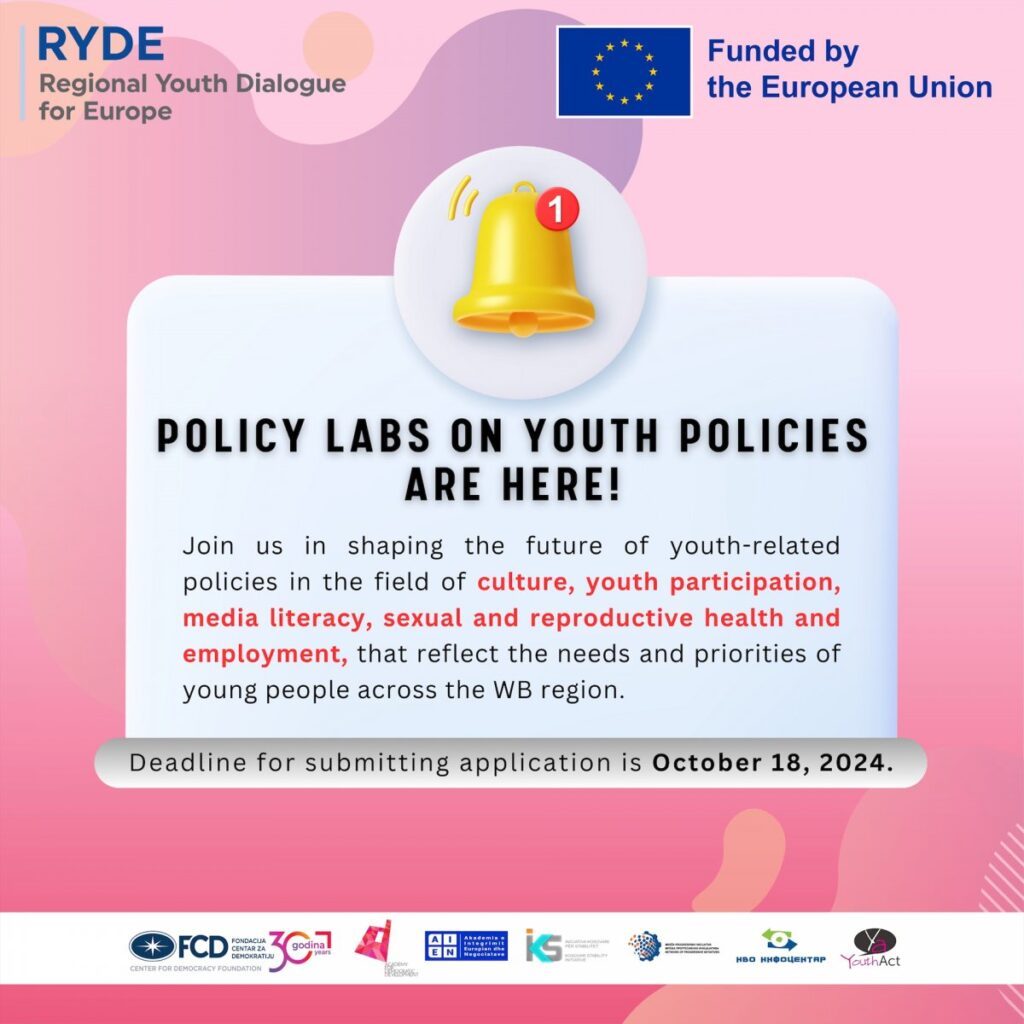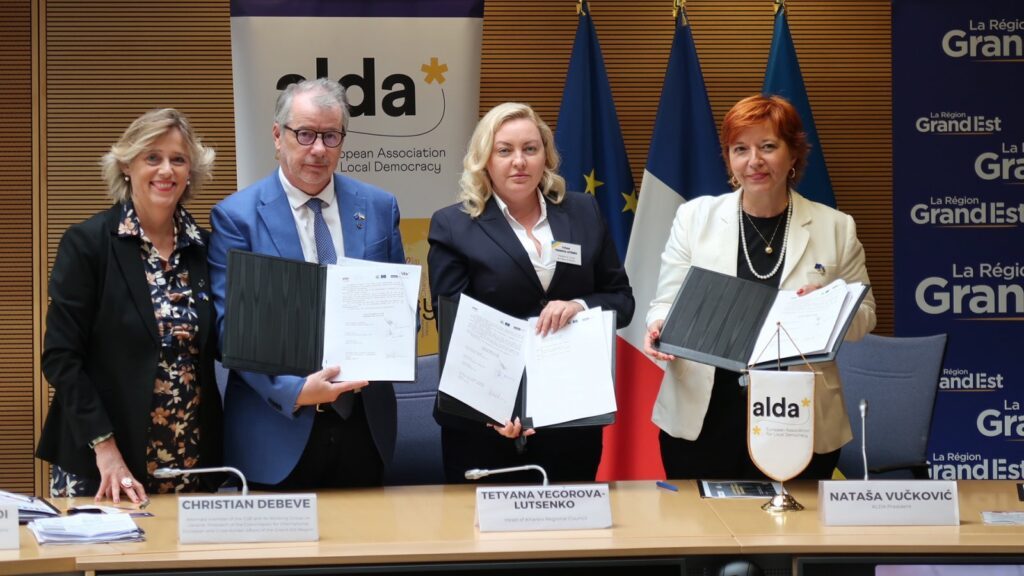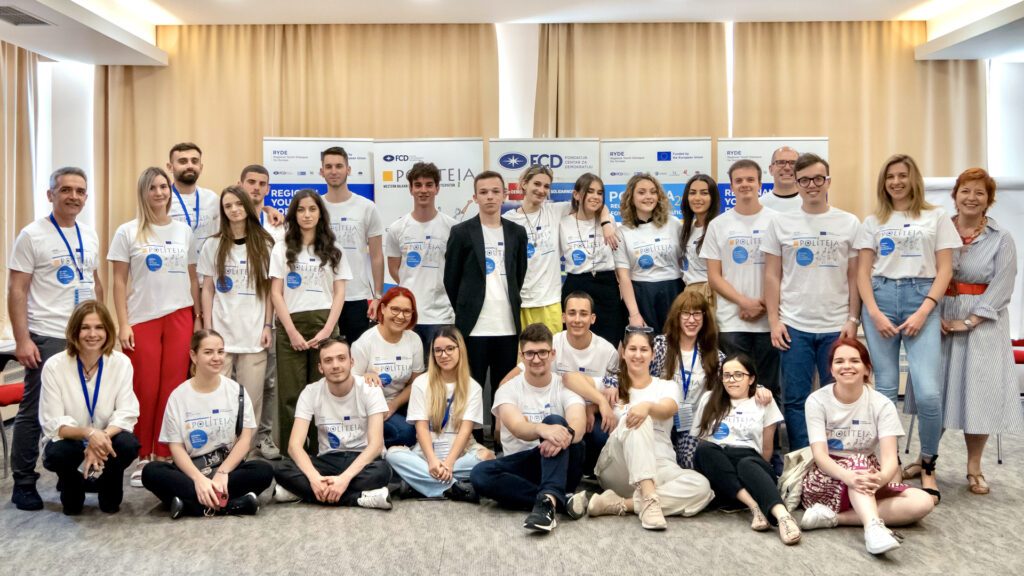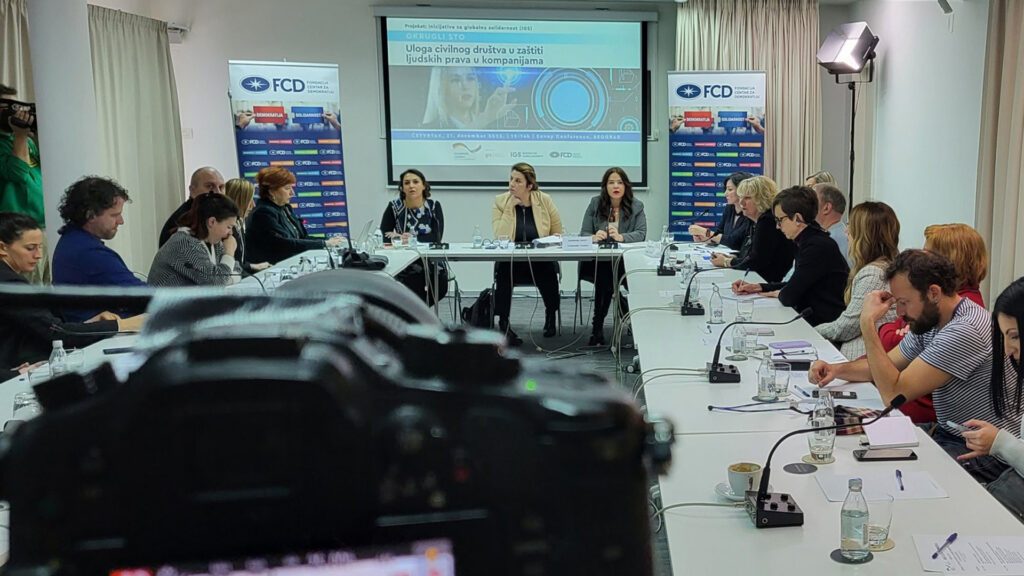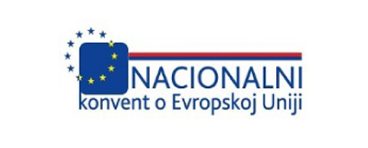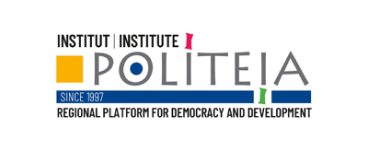Regional Youth Dialogue for Europe Project
Good things come to those who wait – on 8th November 2023, the European Commission published the annual progress reports for the Western Balkan economies for 2023 – the new enlargement package and the Progress Report on European integration process for all WB6. How do these reports assess the progress made by these economies in 2023? To what extent do they address the issues and needs of young people, and do they take into account the involvement of youth in decision-making processes? Just to remind ourselves – Western Balkans consist of Albania, Bosnia and Herzegovina, Montenegro, North Macedonia, Serbia, and Kosovo*[1] and this document conducts a comparative analysis of the reports for these economies, with focus on the youth perspective.
Are we in Serbia all reading the same the European Commission’s Report?
Public reaction to the Report in Serbia was as expected, given the election fervour – which is something we are not unfamiliar with. Serbia’s Prime Minister Ms. Ana Brnabić did not hide her satisfaction with the fact that the European Commission, as she said, “recognised the evident progress Serbia has made” in all key areas. On the other hand, civil society in Serbia does not share the same optimism as its decision-makers, and I'm uncertain whether the people of Serbia perceive the benefits of specific advancements. Whether due to the election campaign or the traditional avoidance of responsibility by public authorities, there has been a notable lack of more thorough commitment to the recommendations of the European Commission and the proposal of more concrete solutions. The impression lingers that we are not sure how to interpret this year's EC’s Progress Report, or, legitimately, we raise the question: Are we all reading the same Report? For nearly a decade, Serbia's preparedness for EU membership has stagnated at the same level, and achieving substantial advancement requires more than superficial assessment that masks the reality.
We rarely receive a ‘very good’ or ‘good’ progress score, while for years now the discourse surrounding us concerns the limited progress score Serbia has made. Based on the Alternative Report on the Status and Needs of Youth for 2023, annual research conducted by the National Youth Council of Serbia, youths who follow political situation in the country say they are most interested in corruption, criminal activity, and topics of national interest such as: Kosovo and Metohija, Serbia’s foreign policy, as well as economic topics concerning employment, the state of democracy and environmental protection.
We must remember that, to date, 22 out of 35 chapters have been opened, of which two have been temporarily closed. The opening of chapters, their closure, and the analysis of recommendations in the accession process to the European Union may seem like mere administrative activities, which they often are. However, what we must not lose sight of is that they relate to areas that affect the lives of each of us, regardless of our interests, occupation, place of residence, or personal values. In respect of EU accession and the sustainability of this type of supranational organisation, we may have different views, yet the defined chapters and criteria directly relate to our standard of living, health, rights, and participation. As such, they must not remain mere words on paper, regardless of our sentiments towards the EU.
The (un)important 16 percent of youth
Based on Serbia’s Law on Youth, anyone between the ages of 15 to 30 belong to the youth category. According to the 2022 census in Serbia, young people (15–29 years old) make up 15.76% of the population. Are our needs visible? And if so, to what extent?
In its report on economic criteria and the functionality of the market economy, the European Commission addresses the Youth Guarantee programme. Given that one of the most pressing issues facing youths is unemployment, implementation of the Youth Guarantee Plan should serve to facilitate entry into the labour market and the acquisition of the necessary skills. Why is this important and what is the Youth Guarantee exactly?
According to official data of the National Employment Service, the number of unemployed youths in May 2023 amounted to 75,526, which is 18.43% of the total number of unemployed persons. It is vital to mention that transition from school to the first stable and/or satisfactory job in the Republic of Serbia is very lengthy, taking almost two years, which means that we actively seek employment for a lot longer than our peers in EU countries[2]. Most youths don’t work in jobs they were educated to perform. Most believe that they need to know someone or to join a political party to secure employment, and at the same time, ‘under the table’ labour is prevalent in our country.
Youth Guarantee is a European mechanism intended to assist youths in overcoming the transition period between school, seeking employment and internships or further education and vocational training, and they function as a political requirement. What does this mean? This programme is a political requirement of all EU member governments ensuring that young people receive quality offers in reference to: employment, continued education, an apprenticeship or a traineeship, and given that the period of entry into the labour market for youths is not easy, we can easily understand the significance of this type of systemic support. This obligation must be fulfilled by governments within four months upon the loss of employment or upon the completion of education. A portion of the responsibility and decision-making is on us as individuals, but the state is the one obligated to facilitate this process and ensure the collaboration of all societal sectors – the public sector, employers, the civil sector, local self-governments, etc. The Protocol on Cooperation in the Youth Guarantee Program is signed between Serbia and the EU in July 2023.
The Progress Report for Serbia also refers to the continuation of the My First Salary programme which supports youth employment. The programme is implemented through four phases. The first phase is intended for employers interested in participating in the programme. Following this is the registration of unemployed persons, while the third phase deals with candidate selection. The fourth phase of programme implementation is the signing of a three-party contract between the National Employment Service, the employer and the chosen candidate. A ‘detail’ that clouds the idyllic image of state intervention is that this programme is implemented over a period of nine months without the candidate establishing an employment relationship. This means that young people lack proper working conditions and the right to social security, regulated days off, and the health insurance they receive is limited in scope. Furthermore, the state will pay out monthly cash compensation to youths with a secondary education in the amount of RSD 28,000, while youths with a higher education will receive RSD 34,000. And, considering that the average consumer basket in August of 2023 amounted to over RSD 100,000, the title of the programme which includes the word ‘salary’, should be altered, as it’s hardly the case that we can legitimately call the provided compensations ‘salaries’. Based on the Research, most youths consider a salary of over RSD 110,000 sufficient to secure a decent living[3]. Add to this that nearly 18% of youths are employed ‘under the table’, and combine this with the fact that youths do not trust our government institutions, and on top of all this that they are exposed to physical and other forms of abuse on a daily basis – what we are left with is a situation where 50% of youths plan on leaving Serbia, while 40% do not yet plan to leave but have not written-off the possibility entirely. We must also take into account that economic migrations have contributed to reducing the youth unemployment rate.
The European Commission has provided recommendations on how to increase youth activity levels and reduce unemployment in the form of temporary employment which is the subject of the closed Chapter 26 – Education and Culture. These recommendations provide an overview of the situation and recommendations referring to secondary and higher education. They also address the development of necessary skills required for the labour market, insufficient opportunities for requalification, and the importance of career guidance and counselling.
Good things come to those who (don’t) wait
The above mentioned Chapter refers also to the previously adopted laws and strategies – at the start of the year, the new, long awaited National Youth Strategy governing the priorities of youth policies until 2030 was adopted. This was followed by the adoption of the Action Plan for the period 2030 to 2050, concerning the implementation of the Youth Strategy. The Action Plan, as a public policy document, operationalises the overall and special goals established in the Strategy; it prioritises the time needed to achieve concrete measures and defines necessary financial assets required for its implementation. On the other hand, we’re still awaiting the adoption of relevant laws which will improve the position and rights of youths.
How far have we come in terms of the Law on Youth? The new Law on Youth has yet to be adopted. However, unlike the previous ministry responsible for youth, the Ministry of Tourism and Youth has started working on the development of a new law through working groups which are currently reviewing a draft copy of the law. Following this, we can expect a public debate to be held. The group is currently working on amendments to the Law on Volunteering, and when it comes to the Law on Internships, a draft copy exists, yet there seems to be a lack of political will. It isn’t unheard of in our country for all further traces of draft laws and the continuation of other processes to be lost in the election process. Furthermore, even when expected to take place, it isn’t unfamiliar for public debates to be held over the holidays or summer months, and information regarding when/where they are to be held is provided as though state secrets are in question.
About Youths – with youths
One point in Serbia’s favour – the European Commission prised the renewed activity of the Youth Council of the Government of the Republic of Serbia, an advisory body which encourages activities concerning the development, realisation, and implementation of youth policy, proposing measures for its improvement. Alongside government bodies, members of the Council include experts and other actors, as well as youth representatives who advocate for the views of young people in Serbia. While there is a noticeable difference in the frequency and methods of holding sessions of the current Council compared to previous terms, there is still room for improvement, given that the new Law on Youth emphasises the importance of this opportunity. Council sessions are a platform for youth representatives to address important youth issues. Therefore, it is crucial that representatives of other ministries, as well as other Council members, actively participate and demonstrate a willingness to implement agreed-upon measures. The mandate of the current Council lasts under the current government's term, and frequent electoral processes in our country hinder a more in-depth commitment to problem-solving due to the frequency of institutional changes.
The newly designated ministry responsible for youth is the Ministry of Tourism and Youth. This institutional change did not entail a systematic change that would further stimulate intersectoral cooperation. What does this mean? According to the latest date, currently there are 11 of a total of 17 envisaged posts filled in the Youth Sector. The situation is somewhat improved in comparison to the previous ministry but we still face a lack of human resources which impedes processes and implementation.
Additionally, we must always bear in mind that youth are a heterogenous group, meaning that even among youths, needs and lifestyles vary. In particular, we are referring to youths who live in urban areas and their peers living in smaller communities in Serbia. This is why mechanisms that will enable youth participation at the local level are crucial. Almost 50% of local self-government units lack local youth councils, and those that do have them, have councils that are often dysfunctional and non-inclusive bodies. To summarise, just as there is a national youth council, we also need functional participation mechanisms locally, such as youth councils, youth offices, local action plans, the financing of local youth policies and youth spaces.
Progress Report concerning neighbouring economies
What do the reports of neighbouring WB economy indicate? In terms of Albania and the fulfilment of this country’s economic criteria, the Report also refers to its readiness to implement the Youth Guarantee. Let us remind you that in 2022, Tirana held the title of European Youth Capital, resulting in a diverse range of content and activities for youth residing in this city and the region. As highlighted by the European Commission, the title enhanced both local and national ecosystem relative to youth policy development. In addition to indicators which show that it has not yet secured systemic functionality in social services, innovation, and employability, Albania made sound progress in these areas over the reporting period.
In line with the previous report’s recommendations, the National Employment and Skills Development Strategy for 2023-2030 was adopted. The strategy focuses on quality employment, skills’ development and better harmonisation in terms of demand and supply on the labour market. The strategy prioritises systematic engagement of the private sector in vocational education and training, as well as the development of green and digital skills through a lifelong learning system. Furthermore, the National Youth Guarantee Action Plan was approved, and in the coming year Albania should start with the piloting of the Youth Guarantee, with particular focus on NEET youth (those who are Not in Education, Employment, or Training education). The National Youth Strategy for 2022-2029 was adopted in October 2022 and also addresses the issue of gender-based violence, fostering skills that promote the emotional, psychological, and physical well-being of young women and men.
In the European Commission’s Progress Report for Bosnia and Herzegovina, focus is also on youth employment issues. Youth unemployment (15-24 years of age) has returned to pre Covid pandemic levels, at nearly 30%. High unemployment has persisted for years due to challenges related to skill mismatches, slow job creation rates, and inadequate tax solutions. Also, there is a significant gender gap present, with women's unemployment rates higher than those for men. At the same time necessary reforms in public employment services are hindered by limited budgetary and human resources.
Bosnia and Herzegovina still holds ‘low quality’ scores in innovation and education due to unyielding skills mismatches. What does this mean, in fact? The education system in BiH fails to provide the work force with the skills and know-how required for unhindered integration into the labour market. Thus, inadequate education is an important factor impacting the exceptionally high level of unemployment among youths. Curriculum plans and programmes remain outdated and are insufficiently compliant with the real needs of the country, while in terms of the entire population, there continues to be a large share of underqualified individuals.
In respect of social policies and employment, BiH has achieved a certain level of preparedness, mostly in terms of the recommendation referring to the drafting of an Implementation Plan for the Youth Guarantee. The Commissions’ previous year’s recommendations have been implemented only partially and thusly remain in force. In the coming year, this country should adopt an Employment strategy at both the legal entity and state levels, and to also adopt an Implementation Plan for the Youth Guarantee which is in line with EU guidelines. Emphasis is placed on the drafting of a Youth National Strategy which should ensure the equal treatment of youth in society.
The situation in Montenegro is quite similar to that of the region, with youth unemployment issues, i.e., nearly 30% of youths fall under this category. Readiness for reforms by the Employment Agency of Montenegro is regarded by the European Commission as an important step towards implementing the Youth Guarantee and achieving a functional labour market. In July 2021, Montenegro adopted the Western Balkans Declaration on ensuring the sustainable integration of young people into the labour market, committing to taking concrete steps for the gradual introduction and implementation of the Youth Guarantee.
Similar to Serbia, the inhabitants of Montenegro are awaiting the completion of important legislative processes that would normatively regulate the rights of young people in the country. The agenda includes the adoption of amendments to the Law on Youth, a new Youth Strategy (as the previous version covered the period until 2020), and the adoption of an Action Plan for its implementation. As stated in the report, this strategy would operationalise youth centres in the country, emphasising their importance as one of the mechanisms of youth policy.
Concerning North Macedonia, young people are also recognised as a vulnerable target group facing difficulties in the labour market. North Macedonia was the first economy in the Western Balkans to introduce a form of Youth Guarantee in 2018. From 2018 to 2022, the youth unemployment rate decreased by almost 13%, despite the Employment Agency operating with insufficient human resources. Although North Macedonia serves as an example of good practice for neighbouring countries, the European Commission emphasises that labour market inactivity remains particularly high for women compared to men. The recommendation is to intensively continue the implementation of this plan, with focus on society’s vulnerable groups. The country has a National Employment Strategy 2021-2027, an Employment Action Plan 2021-2023, and a new plan for the implementation of Youth Guarantees 2023-2026, which was adopted in March 2023. The Law on Youth Participation and Youth Policy, adopted in 2020, regulates various issues in the field of youth policy, particularly youth organisation, youth participation in decision-making, documents of youth practical policy, activities, and measures at the national and local levels. During the reporting period, the National Youth Strategy for 2023-2027 was developed and is awaiting adoption. An open question remains regarding the alignment of the adopted regulatory acts with the country's real capacities for their implementation.
The European Commissions’ Kosovo* report addresses the volunteering environment, aiming for improvement. This includes establishing an appropriate legislative framework in line with international standards and allocating financial and human resources for youth volunteering programmes. A multi-year plan for the implementation of Youth Guarantees has been adopted, and reforms of public employment services are underway, with the Kosovo Employment Agency appointed as the coordinating body. Key efforts were made during the initial phase of scheme implementation. The Ministry of Culture, Youth, Sports, and Innovation established a working group to act as a focal point for implementing Youth Guarantees. Factors directly complicating the situation of improving employability in Kosovo* include the intensive presence of the informal economy and education system deficiencies. Throughout the year, work has been done to secure conditions for piloting Youth Guarantees in two municipalities, amending relevant legislation, and restructuring the public employment service.
The recommendations are there, but where does the responsibility lie?
Various chapters of European Commission reports touch upon the position and issues of young people, providing a brief overview of past achievements and further recommendations. Understandably, due to the extensive nature of the reports, thematic areas, and recommendations, there isn't more specific focus on young people as a distinct target group. On the other hand, in practice, the youth issue is dealt with in other defined chapters, meaning that we are a horizontal group that should be included in social policy, employment, freedom, security, education, environmental protection, climate change, and other areas.
The conclusion of this comparative analysis is that none of the WB economies stand out particularly where youth policy is concerned. The focuses of the presented European Commission packages are youth employability, innovative approaches to employability and education, reducing the NEET rate among youth, and gender inequalities. Differences mainly exist in normative processes, namely the timeliness of adopting legislative acts. While some economies are still awaiting draft laws and their adoption, others can serve as examples of good or bad practices from which processes may be learned. This mutual strength and source of information, both among decision-makers and young people in the region exchanging experiences, are crucial. Successful youth policy involving young people in decision-making lies in having both regional and cross-sectoral cooperation, encompassing all societal actors from the public, private, civil sectors, media, professional communities, and young people themselves.
The European Commission's legitimacy lies in actively engaging young people at every stage of decision-making processes, emphasising the establishment and oversight of mechanisms that facilitate youth involvement in these processes. European Commission recommendations hold both political and legal significance. Nevertheless, the implementation of measures and responsibility lie with decision-makers and other state actors. Still, policies aimed at young people should be created by us, the young people. Aligning European and national expertise with the actual needs of young people should be standard practice. Involving young people in decision-making can impact the existing level of trust in institutions, interest and activism in the politics around us, and youth attitudes toward the European Union. For example, the positive reaction of young people in Serbia to the EU is at a record low, with 41% of youths who do not support Serbia's entry into the EU. Therefore, due to the geopolitical situation in the region and the general decline in support for the accession process, it appears that the European Commission has used the momentum of the reports to gain stronger sympathies and strengthen influence on WB economies. The conclusion of the Youth Progress Index 2023 research, conducted by the European Youth Forum, the largest platform of European youth organisations, indicates that despite progress in certain areas, stagnation persists concerning the rights and freedoms of young people, equal access to education, justice, political freedoms, freedom of religion, air quality, and housing policy.
It is important for us to discuss young people as a distinct target group and for them to be involved in making both national and local decisions. Within such a system, we have our rights and obligations, as well as responsibilities. However, the responsibility of young people and decision-makers in these processes cannot be at the same level.
Author: Jelena Dadić, Youth Policy and Communication Consultant
* This publication was funded by the European Union. Its contents are the sole responsibility of the Center for Democracy Foundation and do not necessarily reflect the views of the European Union.
[1] Note: The asterisk does not prejudge Kosovo's status and is in line with UN Security Council Resolution 1244/1999, as well as the International Court of Justice opinion on Kosovo's Declaration of independence.
[2] Alternative Report on the Status and Needs of Youth for 2023, National Youth Council of Serbia
[3] Alternative Report on the Status and Needs of Youth, Youth Umbrella Organisation of Serbia, 2023.
